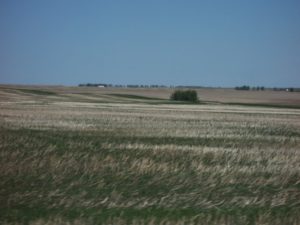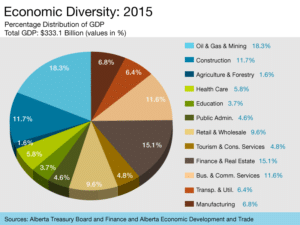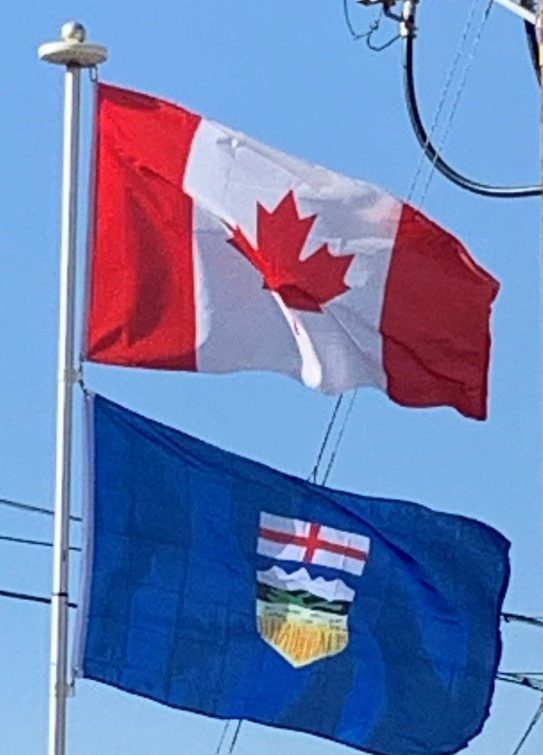
The Alberta badlands are located in southeastern Alberta, where the Red Deer River crosses the flat prairie and farmland, and features deep canyons and striking land-forms. Dinosaur Provincial Park, near Brooks, Alberta, showcases the badlands terrain, desert flora, and remnants from Alberta’s past when dinosaurs roamed the then lush landscape.
Economy:
Alberta’s economy was one of the strongest in the world, supported by the burgeoning petroleum industry and to a lesser extent, agriculture and technology. In 2013 Alberta’s per capita GDP exceeded that of the United States, Norway, or Switzerland, and was the highest of any province in Canada at C$84,390. This was 56% higher than the national average of C$53,870 and more than twice that of some of the Atlantic provinces. In 2006 the deviation from the national average was the largest for any province in Canadian history. According to the 2006 census, the median annual family income after taxes was $70,986 in Alberta (compared to $60,270 in Canada as a whole). In 2014, Alberta had the second-largest economy in Canada after Ontario, with a GDP exceeding C$376 billion. The GDP of the province calculated at basic prices rose by 4.6% in 2017 to $327.4 billion, which was the largest increase recorded in Canada, and it ended two consecutive years of decreases.
The Calgary-Edmonton Corridor is the most urbanized region in the province and one of the densest in Canada. The region covers a distance of roughly 400 kilometers north to south. In 2001, the population of the Calgary-Edmonton Corridor was 2.15 million (72% of Alberta’s population). It is also one of the fastest-growing regions in the country. A 2003 study by TD Bank Financial Group found the corridor to be the only Canadian urban center to amass a U.S. level of wealth while maintaining a Canadian style quality of life, offering universal health care benefits. The study found that GDP per capita in the corridor was 10% above average U.S. metropolitan areas and 40% above other Canadian cities at that time.

Industry:
Alberta is the largest producer of conventional crude oil, synthetic crude, natural gas and gas products in Canada. Alberta is the world’s second-largest exporter of natural gas and the fourth-largest producer. Two of the largest producers of petrochemicals in North America are located in central and north-central Alberta. In both Red Deer and Edmonton, polyethylene and vinyl manufacturers produce products that are shipped all over the world. Edmonton’s oil refineries provide the raw materials for a large petrochemical industry to the east of Edmonton.
The Athabasca oil sands surrounding Fort McMurray have estimated unconventional oil reserves approximately equal to the conventional oil reserves of the rest of the world, estimated to be 1.6 trillion barrels. Many companies employ both conventional strip mining and non-conventional in situ methods to extract the bitumen from the oil sands. As of late 2006 there were over $100 billion in oil sands projects under construction or in the planning stages in northeastern Alberta.
